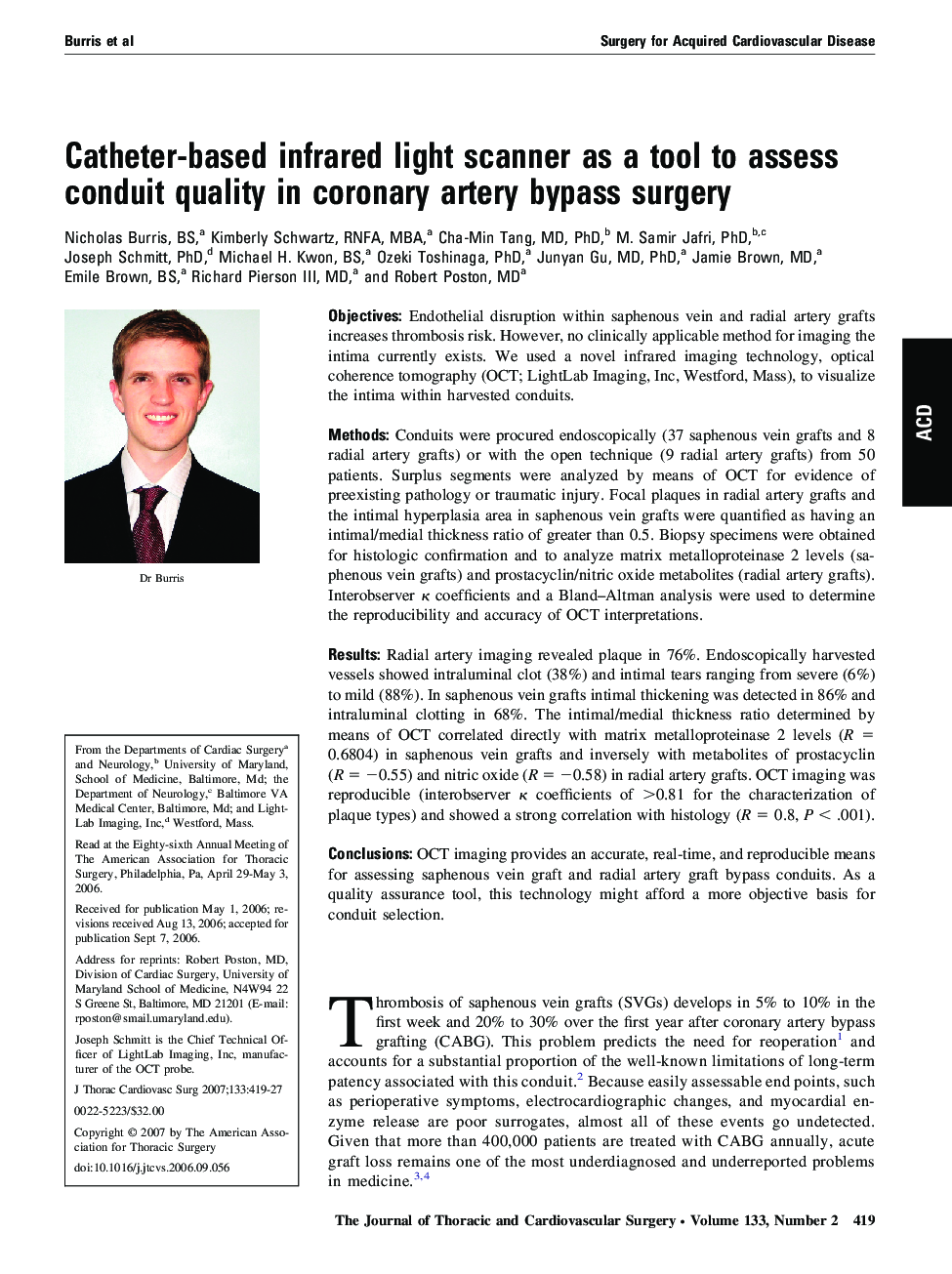| Article ID | Journal | Published Year | Pages | File Type |
|---|---|---|---|---|
| 2984366 | The Journal of Thoracic and Cardiovascular Surgery | 2007 | 9 Pages |
ObjectivesEndothelial disruption within saphenous vein and radial artery grafts increases thrombosis risk. However, no clinically applicable method for imaging the intima currently exists. We used a novel infrared imaging technology, optical coherence tomography (OCT; LightLab Imaging, Inc, Westford, Mass), to visualize the intima within harvested conduits.MethodsConduits were procured endoscopically (37 saphenous vein grafts and 8 radial artery grafts) or with the open technique (9 radial artery grafts) from 50 patients. Surplus segments were analyzed by means of OCT for evidence of preexisting pathology or traumatic injury. Focal plaques in radial artery grafts and the intimal hyperplasia area in saphenous vein grafts were quantified as having an intimal/medial thickness ratio of greater than 0.5. Biopsy specimens were obtained for histologic confirmation and to analyze matrix metalloproteinase 2 levels (saphenous vein grafts) and prostacyclin/nitric oxide metabolites (radial artery grafts). Interobserver κ coefficients and a Bland–Altman analysis were used to determine the reproducibility and accuracy of OCT interpretations.ResultsRadial artery imaging revealed plaque in 76%. Endoscopically harvested vessels showed intraluminal clot (38%) and intimal tears ranging from severe (6%) to mild (88%). In saphenous vein grafts intimal thickening was detected in 86% and intraluminal clotting in 68%. The intimal/medial thickness ratio determined by means of OCT correlated directly with matrix metalloproteinase 2 levels (R = 0.6804) in saphenous vein grafts and inversely with metabolites of prostacyclin (R = −0.55) and nitric oxide (R = −0.58) in radial artery grafts. OCT imaging was reproducible (interobserver κ coefficients of >0.81 for the characterization of plaque types) and showed a strong correlation with histology (R = 0.8, P < .001).ConclusionsOCT imaging provides an accurate, real-time, and reproducible means for assessing saphenous vein graft and radial artery graft bypass conduits. As a quality assurance tool, this technology might afford a more objective basis for conduit selection.
